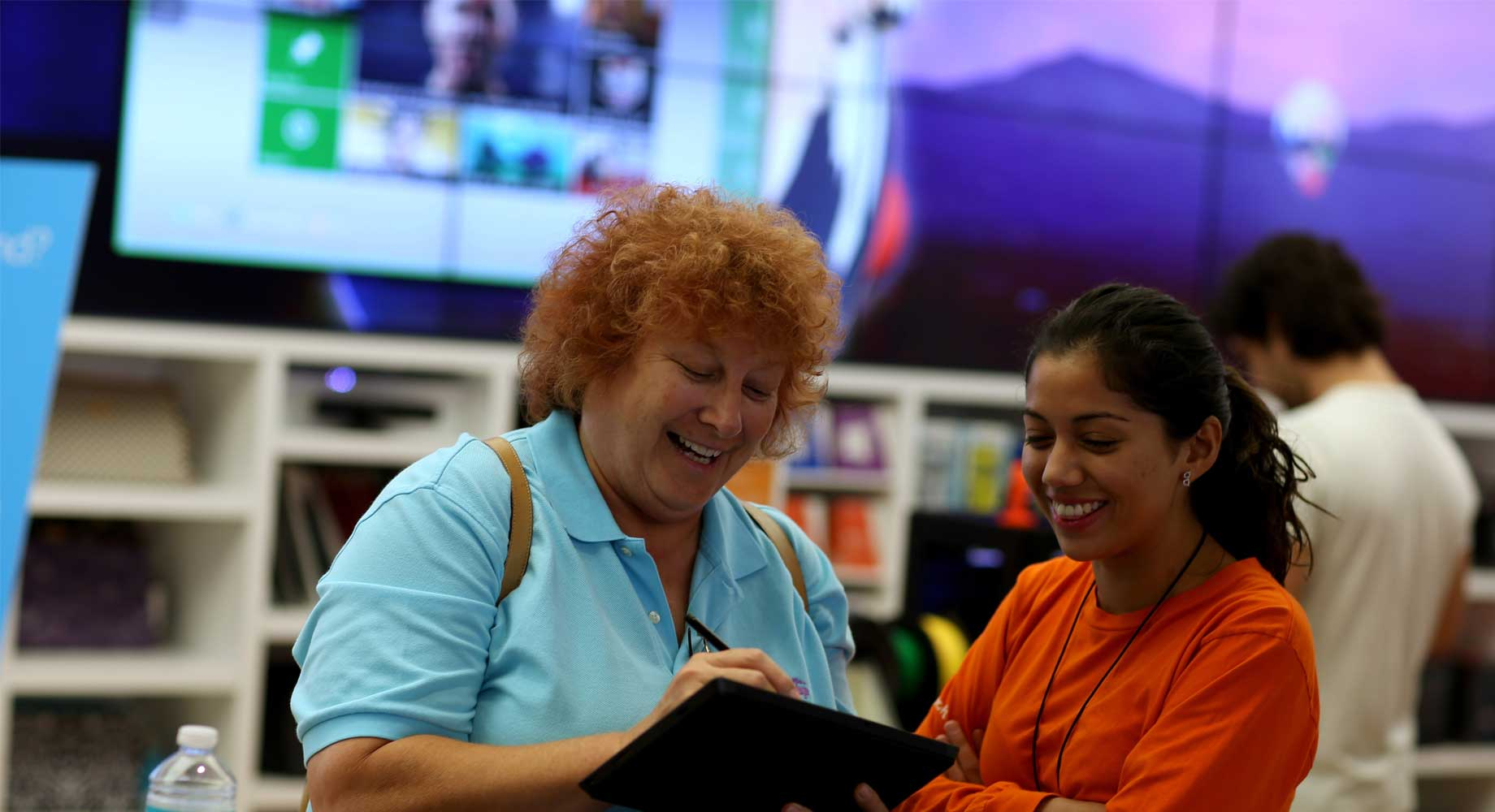The cellphone’s evolution from mere communications device to handheld computer has revolutionized shopping by enabling the consumer to shop prices and order goods online, even when he or she is physically standing inside the store — and from a competing retailer, if necessary. Of course, initially, this challenged the shopping center industry. But today the smartphone and the relentless advance of technology are just as likely to lend retailers and retail center owners an advantage.
Many landlords now provide robust Wi-Fi signals throughout their retail centers, giving consumers the bandwidth to use phones to their fullest. Combined with beacon technology, this also enables retailers to deliver an omni-channel shopping experience. Phones now play an integral role in the way retailers and shopping center owners collect demographic information. Researchers are capturing lots of mobile data from these phones about customers’ interests, spending patterns and more.
“Technology has become a necessity in the shopping center industry,” said David Sheldon, vice president for client engagement at Long Beach, Calif.–based Retail Design Collaborative. “Retailers have to accept that technology has shaped and advanced how we engage with the world socially. The challenge is not to accept new technologies, it’s to accept change itself.”
Ultimately, all this could lead to a recalibration of the ways in which landlords are compensated under percentage leases, says Naveen Jaggi, who leads the JLL retail brokerage business in the Americas. In the U.S., if a customer returns a product purchased online to a physical store and then uses the credit to purchase another item, such a transaction is not considered part of the in-store sales volume. Landlords want to see that reversed, Jaggi observes. “Postrecession, malls in particular have been told to update their asset by bringing in better food, beacons, Wi-Fi and all the things that make people want to come and stay,” Jaggi said. “Landlords are enabling customers to buy more product through their phones with technology, but they’re not receiving commensurate value for that when a transaction takes place at the store.”

Physical-store customers are increasingly relying on digital technology
The onus is on the landlord to provide the tenants an internet pipe large enough to offer crash-free usage for hundreds of shoppers simultaneously researching goods, receiving loyalty-program notifications, or posting after-purchase selfies to social media, according to Heather Bogden, a Salt Lake City–based vice president of the Colliers International retail division.
Shopping center tenants in Europe have similar expectations, according to Peter Kuzmiak, founder and managing director of Veritas Consulting, a Czech Republic–based retail real estate services firm. Wi-Fi systems must have sufficient power to handle increased volumes of processes, as retailers adopt emergent omni-channel technologies, such as digital mirrors that enable shoppers to change clothing colors virtually or to purchase items direct from the dressing room. “A new generation of shoppers are requiring more-advanced technologies and are pushing retailers to evolve,” Kuzmiak said.
Fashion retailer Mango is implementing digital fitting rooms in its stores, including its Lisbon, Portugal, flagship, which opened last fall, says Stela Dhami, an Albania-based managing partner with Colliers. This innovation enables customers to scan clothing tags and receive suggestions for complementary garments or accessories, or to get help from sales associates to find a different size or color. “Businesses are starting to be aware of the ways technology can increase sales, improve market share, create brand awareness and facilitate the operations processes,” Dhami said.

Getting an instant price check
At the back of the house, landlords and retailers alike are using Wi-Fi, beacons and similar means to collect information from customer phones — including driving distance, frequency of shopping visits, what the shoppers tend to buy and where they spend the most time when they visit. And retailers are more frequently sharing this data with their landlords for collaboration, which is a departure from the past, says Stephen D. Lebovitz, CEO of Chattanooga, Tenn.–based CBL Properties. “I think retailers realize that we’re competing against Amazon and other experiences,” he said, “so we need to pool our resources to stay competitive.”
In many cases retailers and landlords are using real estate technology vendors (so-called proptech firms) to collect this information. Forum Analytics and OneMarket are among a growing number of companies acquiring and aggregating data to furnish consumer insights and to deliver products conceived to enhance the shopper experience and drive sales. One of OneMarket’s products, called Live Receipts, allows consumers to receive and aggregate receipts from a variety of stores and venues through Facebook Messenger, email, text message or other digital channels. It also gives retailers and landlords the ability to keep engaging the shopper.
“Retailers realize that we’re competing against Amazon and other experiences, so we need to pool our resources to stay competitive”
“We are living in an experience economy, where physical retail has a huge advantage, and it’s going to be those that best leverage their physical assets — and aren’t afraid to disrupt them with technology to meet consumer demands — that will stand out as the winners,” said Don Kingsborough, CEO of OneMarket.
While mobile data now offer unprecedented insight into the consumer base itself, the real value may well be found in the potential to predict shopper behavior, says Paul Sill, founder and senior managing director of Forum Analytics. But the science is still young, and a current lack of trained statisticians is impeding expansion, he says. “Collectively, the data is changing the game in terms of understanding who your customers are, their pattern of movement and their shopping tendencies,” said Sill. “But there’s a big leap from knowing that to being able to predict some future outcome based on what action a landlord or store might take.”
The fact that big-data-mining technologies continue to evolve presents something of a dilemma for many landlords and retailers: Should they sign up with a certain vendor or deploy a specific technology today, or should they instead wait to see if something more advanced comes along? To some degree this uncertainty, along with the heightening of security concerns, has slowed the uptake of these upstart technologies, according to Garrick Brown, national retail research director for Cushman & Wakefield. “There are a slew of new companies in the big-data world making an awful lot of promises,” Brown said. “It’s like the Wild West.”
Some landlords, including Woodland Hills, Calif.–based NewMark Merrill Cos., are undertaking the technological tasks on their own. In addition to beefing up Wi-Fi at its properties, NewMark Merrill places cameras in stores to gauge store traffic, levels of customer service and rates of conversion, says President and CEO Sanford Sigal. The firm also tracks the comments made about its tenants on social media, to help evaluate their strengths and weaknesses. Moreover, NewMark Merrill uses its Wi-Fi to capture huge amounts of shopper mobile data, enabling the formulation of direct-marketing strategies.
Sigal says the combination of these tools, especially the data collected, gives the firm a competitive advantage in courting prospective tenants. “More and more tenants are asking what our technology strategy is,” said Sigal, a self-described tech geek who is also chairman of proptech firm BrightStreet Ventures. “Having an answer gets you pretty far along.”
By Joe Gose
Contributor, Commerce + Communities Today


